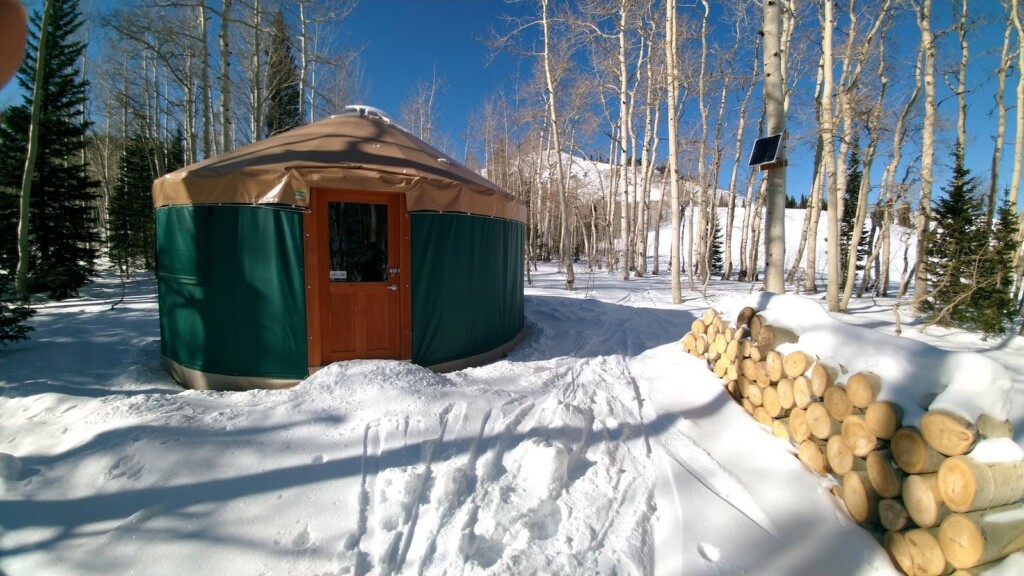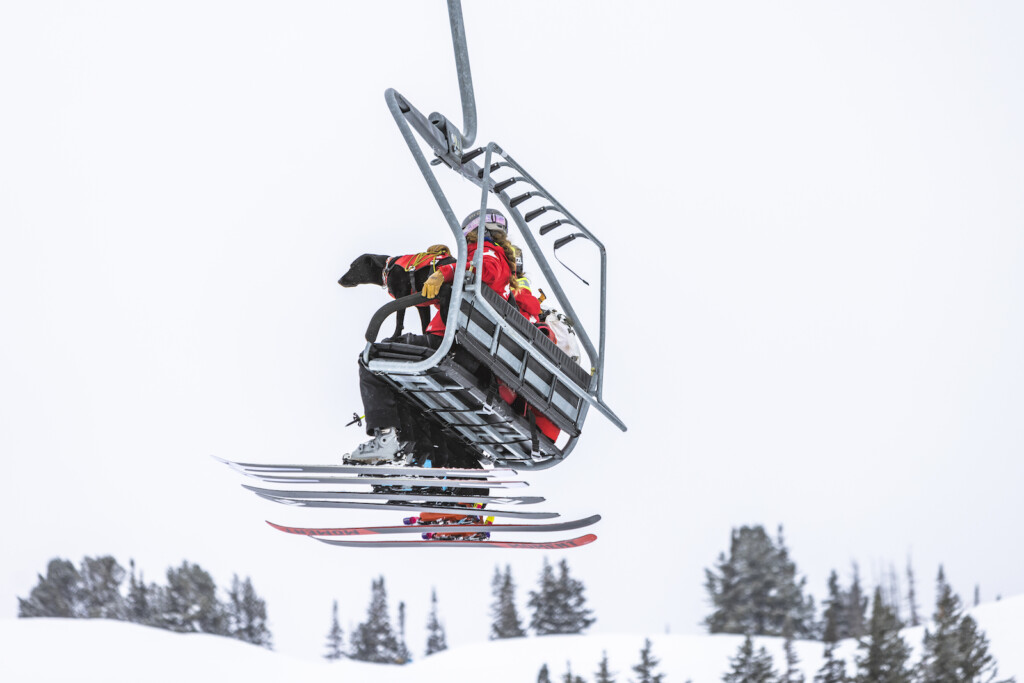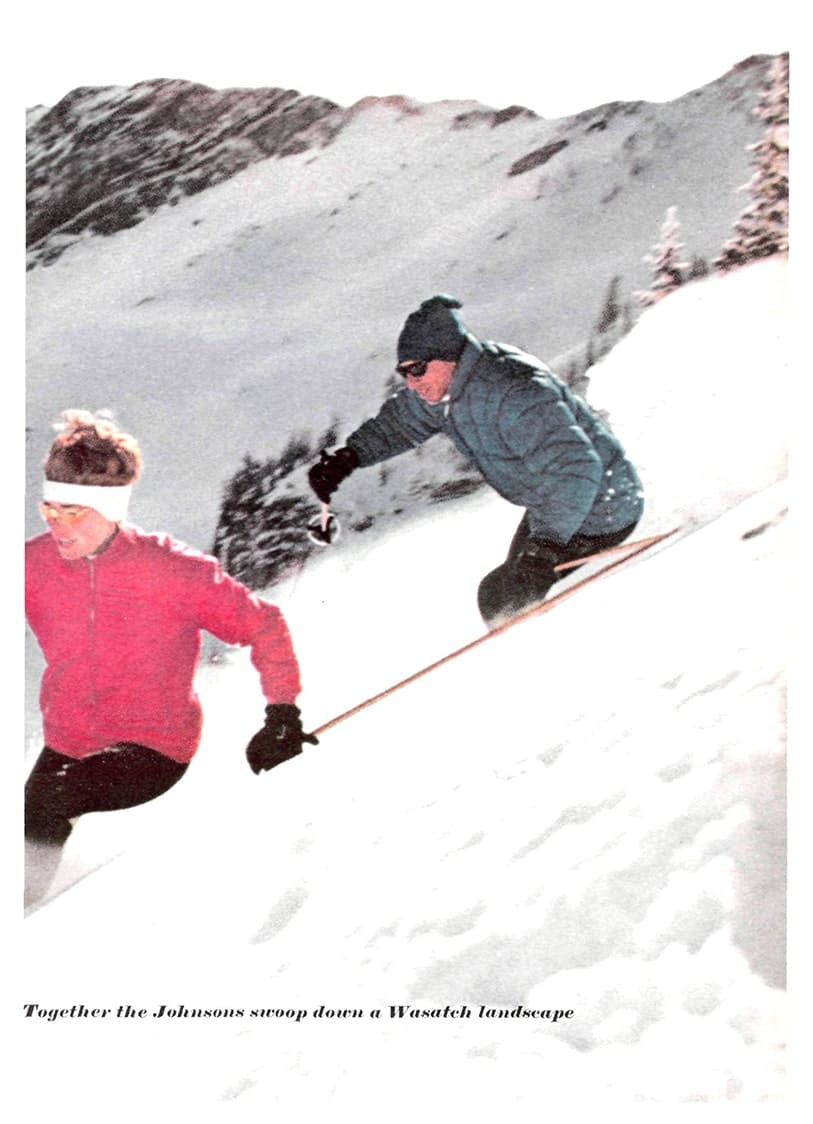
Ted Johnson and Dick Bass built a recreation legacy.
Snowbird’s millionaire oil tycoon and financier Dick Bass was an outdoor icon. Bass jet-setted the world’s highest peaks, summiting seven of them in his fifties. Bass not only set world records, he also started a trend that other aging, adventurous multi-millionaires would follow. John Krakauer’s famous Everest expedition novel, Into Thin Air, demonstrated how ― for better and for worse ― big money was chasing after big peaks. A bronze statue of Bass rests at the base of Peruvian Gulch depicting his life at altitude.
While Snowbird would have never come to fruition without Bass’ fortune, the vision for a ski resort in the Peruvian Gulch and Gad Valley pre-dated the oil tycoon’s discovery of white gold in the Wasatch.
No less influential in the establishment of one of the world’s-greatest ski resorts was Bass’ visionary co-founder Ted Johnson. In essence, you could say that Johnson founded Snowbird, but Bass funded it.
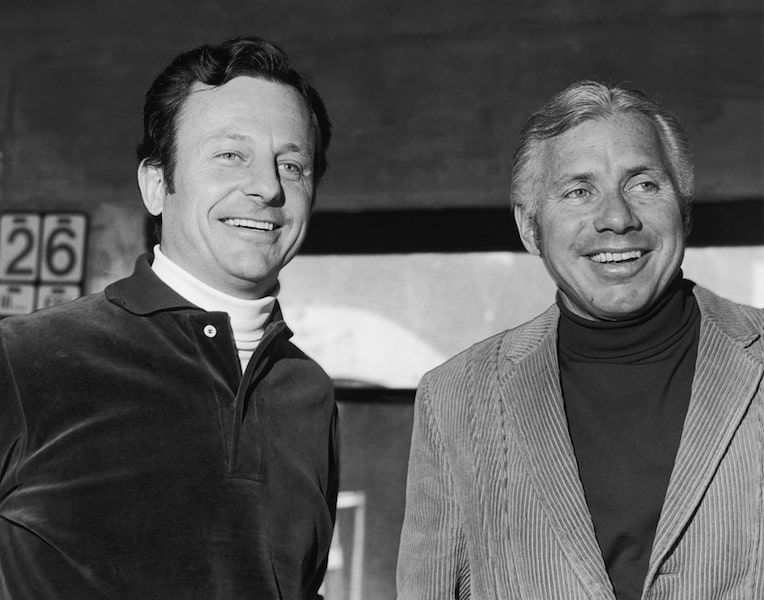
When Johnson conceived the idea of opening a ski resort in Little Cottonwood Canyon in the mid-1960s, he was manager of the Alta Lodge. He met Dick Bass at a party in Colorado in 1969, and Bass paid a visit a week later, partnering with Johnson to build his dream resort in the Peruvian Gulch and Gad Valley watersheds just over the ridge from Alta. Capitalizing on the growing popularity of skiing as a recreational sport, the Bird took flight in December 1971, but Ted Johnson’s story began long before then.
Johnson spent a year in an orphanage after being abandoned by his father in Depression-era California, while his mother looked for work. Chores were part of his everyday life, and Johnson learned the value of hard work and determination at a young age.
Throughout the Depression in his teenage years, Johnson picked cotton in Bakersfield, California, but he still managed to put both money and time aside to pursue his outdoor passions of cycling, surfing and skiing.
Spending summers at the beach and winters on the slopes, Johnson eventually learned that the peaks towering above the Great Salt Lake in the Wasatch Range offered even steeper slopes and finer powder than he could dive into anywhere in California, and he migrated to Utah in 1959.
As manager of Alta Lodge, Johnson was a jack-of-all-trades; he could fix anything that moved, taught ski lessons, tended bar, assisted filmmakers, and skied in their movies prior to making movies of his own. But skiing was his first passion, and opening a ski resort was almost an obsession.
Prior to the 1920s, downhill skiing was primarily a European sport that gradually gained popularity in America. By the 1930s, ski resorts were popping up in mountain towns from the Catskills and the Adirondacks in the east to the Rockies and Sierra Nevada’s in the west, and the canyons of Salt Lake City’s Wasatch Range were a skier’s paradise just begging to be discovered.
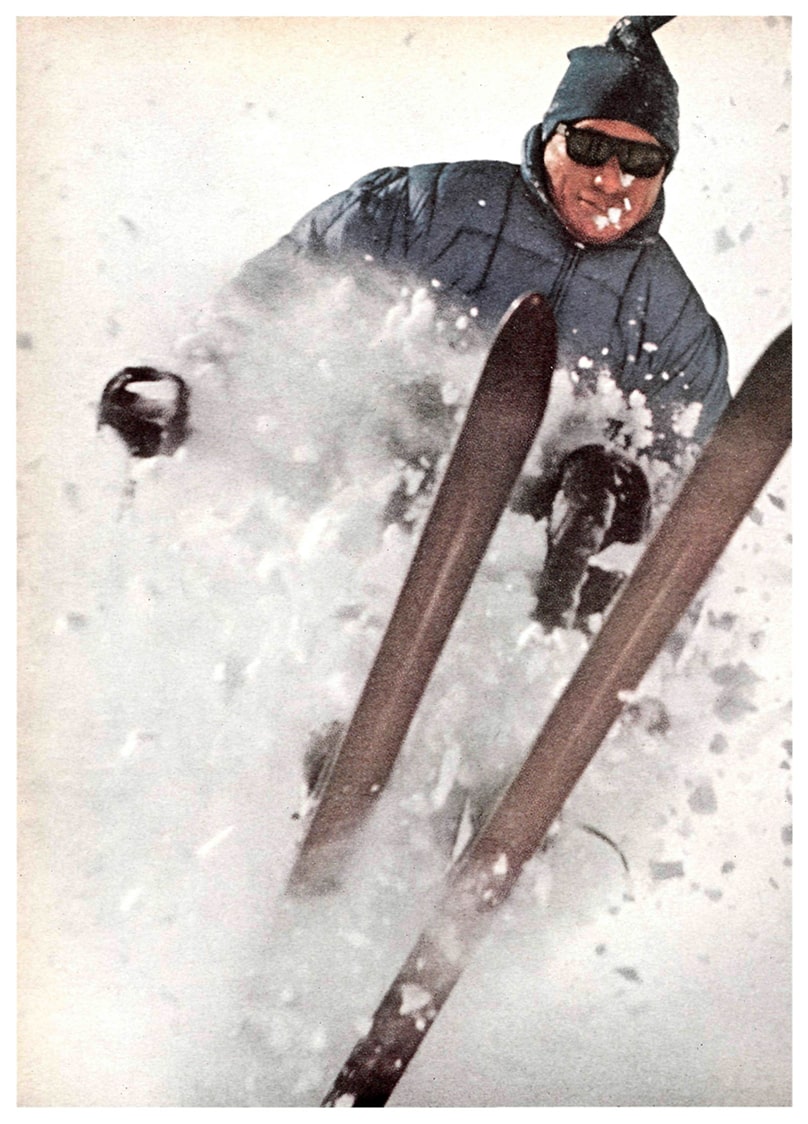
The town of Alta, a turn-of-the-century mining town with a former population of 8,000, was best known at the time for its high-grade silver ore, but Johnson and Ted Bass, a poetry-spouting Texas oilman, would forever change the economic and historic focus of Little Cottonwood Canyon from silver prospecting to a different kind of treasure — the kind that fell freely and abundantly upon the glacial cirques and craggy, tree-lined slopes of the Wasatch Mountains from November through April. It would come to be known as “The Greatest Snow on Earth.”
The original town of Alta, consisting of 138 homes, two smelters, several stores, hotels and a railroad, was destroyed first by fire in August 1878, and later by a series of avalanches in 1885, although silver mining continued well into the 20th Century.
In the 1950s and 60s, the area was still riddled with mining claims and Forest Service deeds that needed to be purchased before a resort could be built. One of these claims was named Snowbird.
In 1960, Johnson married Wilma “Wilbere” Chudleigh, an Australian woman he hired the year before. The couple traveled the world making movies, but they couldn’t shake the idea of opening a ski resort just over the ridge in Alta’s backcountry.
According to writer Dawn Cardinale, “Mining attorney Bob Pruitt, Jr. was instrumental in helping [Johnson] and Chudleigh collect Blackjack, White Pine, Hidden Peak and the Wasatch Mines (Snowbird Village) claims. They created Snowbird Limited and sold 20 partnerships at $20,000 … to fundraise.”
Pairing up with friend, fellow skier and filmmaker Warren Miller, the trio designed condos and made a 13-minute promo film to help sell the idea of a ski resort to prospective buyers. But by 1969, financing was still a problem.

After falling in love with the area, millionaire financier Dick Bass joined the venture. Bass was the first person to scale the highest peak on each of the seven continents and the oldest person to scale Mt. Everest (in 1985 at the age of 55). With Bass’s capital, Snowbird opened two years later, but the costs were staggering, exceeding proposed estimates by millions of dollars. A six-mile sewer line had to be built at a cost of 13 million dollars, and there were setbacks at every turn, including two avalanches during opening week.
Dick Bass saw Snowbird’s potential early on, stating: “My underlying dream for Snowbird is the creation of a year-round resort, which respects and complements the beauty and inspiration of this natural setting — a place dedicated to increasing human understanding through the enhancement of body, mind and spirit.”
Bass served on the corporation’s board of directors from 1966 to 1971, and sold his shares in May 2014. Dick Bass passed away in July 2015 at the age of 85, and Ted Johnson was struck and killed by a drunk driver in a crosswalk in January 2018 at the age of 91, but the legacy they built lives on. For Johnson, it was the fulfillment of a dream.
Johnson‘s induction plaque from the Intermountain Ski Hall of Fame in 2007 reads: “Snowbird stands as a legacy to the wily ‘Silver Fox’ whose quest was not to be denied.”
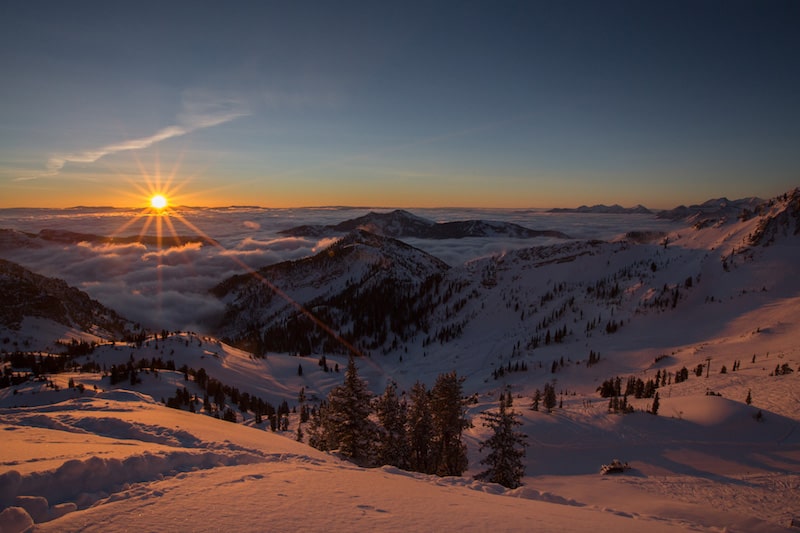
Known for its unique terrain, easy access, multiple lodges, restaurants, trams, tunnel, lifts and multiple runs, Snowbird quickly gained in fame and popularity, putting Utah on the map with its many prestigious awards. Now known as Snowbird Ski and Summer Resort, and boasting a variety of year-round activities, Snowbird receives universal acclaim as a world-class ski and adventure destination.
MORE ON UTAH SKI RESORTS
Mountains of Money: What Happened to Utah Ski Resorts?
Utahns’ Love Affair with Cottonwood Canyon
Alta’s Wild Old Bunch: the 100-Plus Members Are Bonded by a Love of Life and the Love of Skiing
100-Year-Old Wasatch Mountain Lodge Hidden in Dense Forest of Big Cottonwood Canyon
Running In The Utah Mountains With Dogs In Deep Snow




